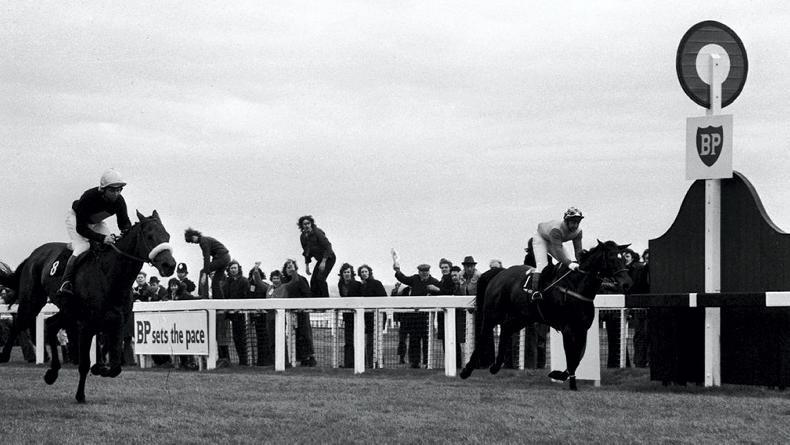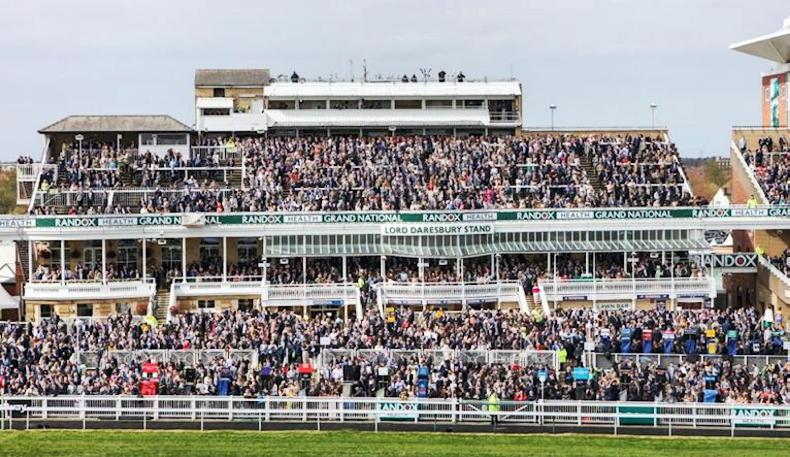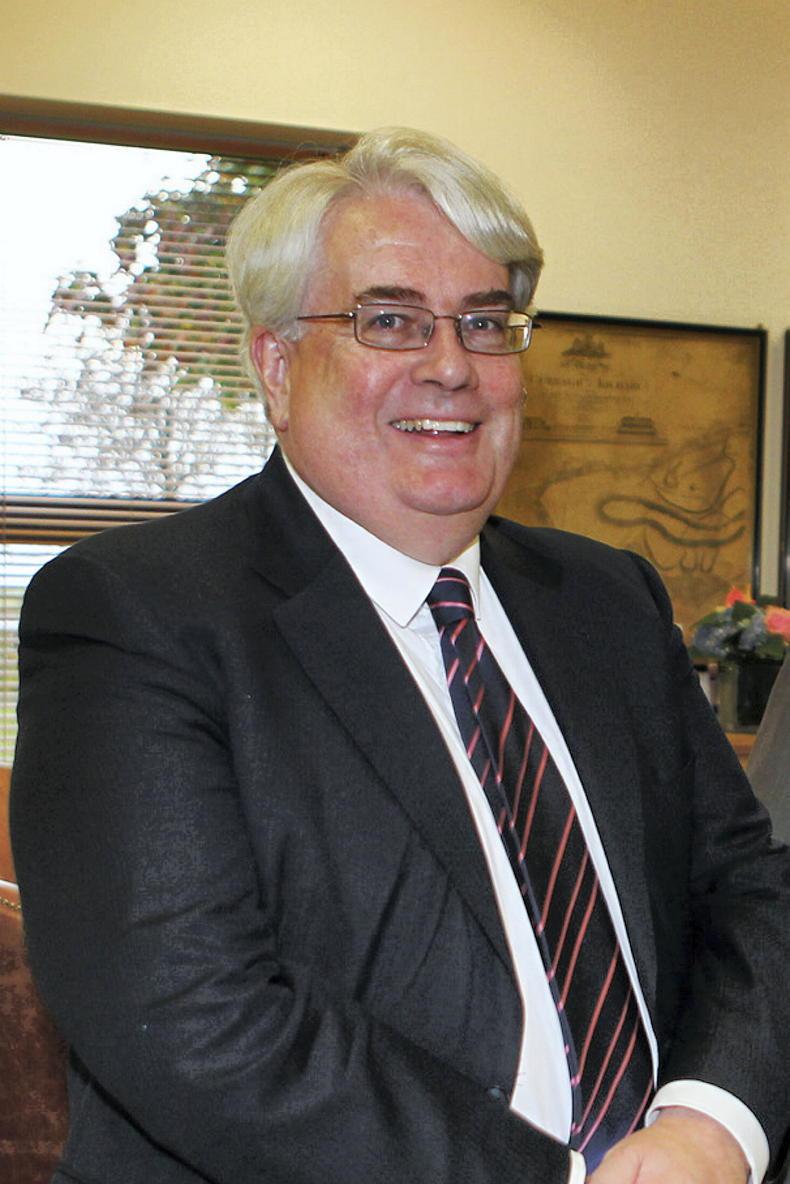AN overcast, grey, early spring day just north of Liverpool. Cold but dry.
This is the story of what was about to unfold over nine minutes through the eyes of a 21-year-old student in his final year, studying for the Bar. Well, nine minutes 1.9 seconds if you want to be pedantic. Many will have their own version.
For those old enough for it to lie on the right side of the line between memory and history, there will always be where you were and what you were doing. For some there may have been real involvement. For the 21-year-old standing on the terraced roofs of Aintree it was more, much more, than an ‘I was there’ moment.
However, as it was seen through the eyes of a fan and not a participant, a little back story is needed. The account of all eye witnesses requires context. I did not come from a racing family, but grew up an only child in suburban west Dublin as a child of parents both of whom were into sport. I was brought to many memorable events. Santry in 1958 when Herb Elliott smashed the world mile record, and the first five broke four minutes, four years after Bannister had run the first four-minute mile.

Dalymount in 1957 when the first Irish team (Shamrock Rovers) played in the then European Cup and were soundly beaten 6 – 0 by the Manchester United Busby Babes. Many Five Nations matches, seated in the old wooden stand at the corner of the Havelock Square end of Lansdowne Road, and All Ireland games in Croke Park. Yet, it was the trips to Leopardstown, Fairyhouse, Baldoyle and the Phoenix Park that really caught the impressionable imagination.
I was introduced to the Grand National. My dad had previously brought home rented newsreels, but my first memory and my first hero was Mr. What, winner in 1958 and a constant over the following five years. I began to read of the colourful, and sometimes extraordinary, history. Lottery, Manifesto, Reynoldstown and Golden Miller. In 1960 we had the first televised National.
Hooked
No RTÉ then, and only some had access to the BBC. A big crowd gathered in our house to watch, with me sitting at the front on the floor. Mr. What was going as well as any (far better in my biased view) when he uncharacteristically fell at second Becher’s. The favourite, Merryman II, went on to win comfortably. I was hooked.
Throughout the sixties I kept a series of scrapbooks, into which went every cutting about the race and its participants. Then came the shock announcement in 1964 that Aintree was to be sold for development, and a stream of ‘last Grand Nationals’ followed. For the young teenager who had invested so much emotion in the race, it was a harrowing time.
I turned 21 in October 1972 and, as luck would have it, Aintree revived its autumn meeting for the first time in almost a decade. My now widowed mother gave me the money to take the boat to Liverpool for the event. The Grand Sefton was then run over just short of three miles, and was won by Glenkiln, carrying the colours of Noel Le Mare.

L’Escargot, already a dual Gold Cup winner, had not gotten very far in the 1972 National and was, it was said, on a mission to see if he might take to the course. He ran well under top weight to finish second, and was to play a role the following March. I left determined to be there for the main event, and suffered a reduced social calendar that winter to make sure the kitty was up to getting me back.
Greasy café
Friday, March 30th, 1973. The overnight boat to Liverpool arriving early morning. The kitty had its limitations, and it was a walk to the city centre. A very modest breakfast in a greasy café, and the train from Liverpool Central to the course. You could still pay in at the gate, and I followed a practice I have honoured ever since. If you have paid a lot to be there, buy the best ticket you can. That for me, from my trial run the previous autumn, seemed to be the County roof. I still have the badge.
It was only three years later, in 1976, that the meeting became jumps only, so we had a modest flat race and a half decent hurdle before the great event. Something made me want to see every horse in the parade ring, and I ticked them off one by one, before climbing the many steps to the roof. In those days of doubt, the crowds were much smaller than today, and it remained easy to find a good pitch, despite my late arrival.
The field was considered strong. Crisp had easily won the two-mile Champion Chase at Cheltenham in 1971. He was joint top-weight on 12 stone with L’Escargot. They gave one pound to Spanish Steps who had been an impressive Hennessy winner, Gold Cup placed, and a regular in the top staying chases.

Crisp was joint favourite with Red Rum, who had run up an impressive sequence of wins, starting from a modest handicap mark, but was still receiving 23lbs from the top-weights. There had been little rain, so the ground was fast, and there was speculation that the course record, which had stood from the thirties, might be broken.
Spectacle
From my vantage point the spectacle unfolded. The parade. The horses turning away to the right and then slightly left to be shown the first fence. Back to the start, just to our left, and tense moments as they circled before the off. There are some memories which last a lifetime and what followed is one of the most vivid.
The field follows that long straight run, moving slightly right to left from my perspective, over five fences until they reach Becher’s. The commentator calls Crisp as being among the leaders. No big screens then, so only the view through binoculars to Becher’s almost a mile away. The yellow and pink colours of Crisp right down the inside.
After Becher’s a turn to our left towards the fence immortalised by Foinavon six years earlier. As they race away from you, the leaders can only be told by who rises first at the fences and from the loudspeakers, but as they turn left it is clear that Crisp has taken a good lead. A man in front of me turns to his friend and asks ‘what is Pitman about’? We were soon to find out.
An illusion
Over the Canal Turn and the run back towards the stands. Crisp seems to go further in front. As they pass me at the Water, he is now 20 lengths clear and, if anything, seemed to me (it was in hindsight likely an illusion) to kick on as they took the sharp turn to go out into the country.
It is often said that you get a better view on the screens at Aintree (or on television) than watching through even the best of glasses. I think that you have to watch it direct from the stands to get the true scale of what is happening on the run down to Becher’s. The horse in yellow and pink is almost a fence in front and powering on.
Halfway down that long run, a horse in maroon leaves the chasing pack and starts in pursuit. The rest is history. I had always wanted to see great horses run in, and hopefully win, the National.
I was amongst the many willing Crisp home. The almost slow motion way from the last that he wavered off a true line is etched in the memory. Little did we know then what Red Rum was to become, and the significant part he was to play in saving and reviving the National. That was in the future.
It seemed a bittersweet end to a wonderful spectacle at the time. L’Escargot ran on to be third, coming from somewhere near Manchester. It is worth saying that Crisp, at level weights, beat him further than he had been beaten some weeks earlier by The Dikler and Pendil in one of the best Gold Cups of the seventies.
Trivia
On the boat back home that night, I watched a replay with my watch in hand (no internet then), and realised that Red Rum had knocked 20 seconds off the record. A final piece of trivia. Red Rum carried the second colours of Noel Le Mare (yellow cap), Glenkiln carrying the first. He carried those second colours for the rest of his career, without any clerk of the scales objecting!
The County Roof (now named after Lord Daresbury) is much the same today, apart from a little rebuilding after a fire. I hope to stand there in a few weeks, as I have done almost every year since 1973. Sometimes youthful infatuations fade, but if there was any possibility of that happening to me it died on March 31st, 1973.
Every sport needs its outreach to those who may not be its natural constituency. The National is that to jump racing.




 This is a subscriber-only article
This is a subscriber-only article
 It looks like you're browsing in private mode
It looks like you're browsing in private mode







SHARING OPTIONS: